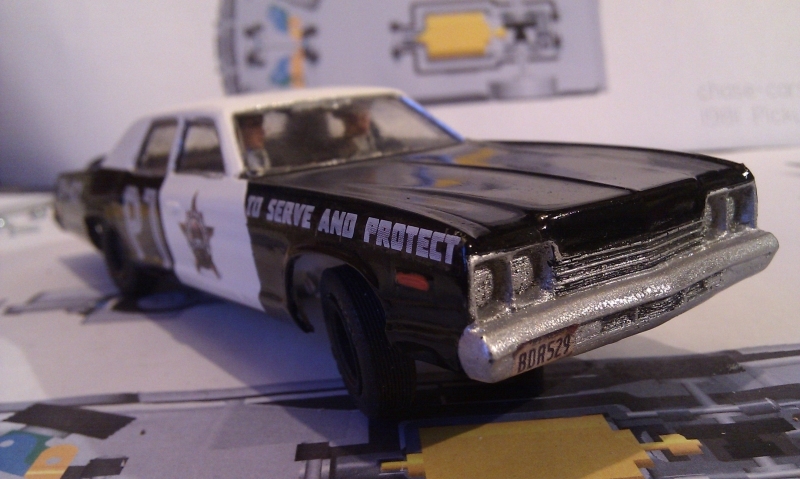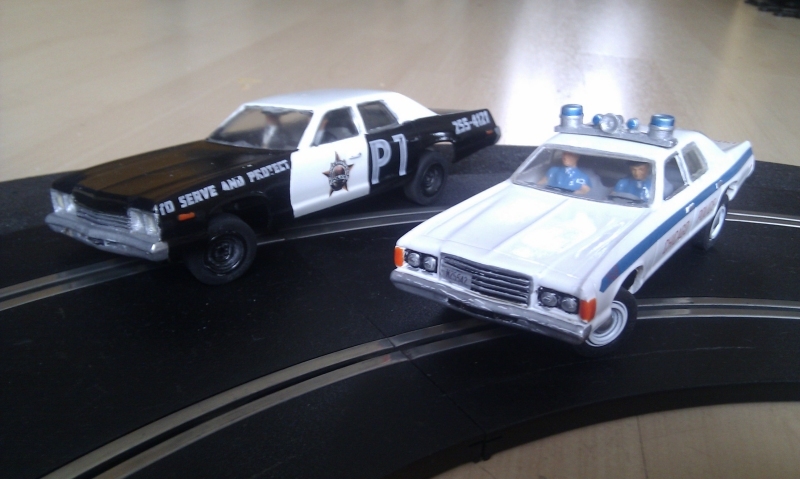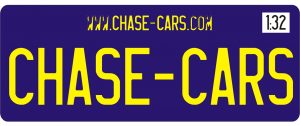Description
Kit includes:
- Resin bodyshell
- Vacform windows
- Vacform interior
- Resin driver and passenger’s heads
- Resin wheel centres
- Waterslide graphics set
- Body mounting screws
£26.00

This car is ideal if you’re 106 miles from Chicago, you got a full tank of gas, half a pack of cigarettes, it’s dark, and you’re wearing sunglasses. It’s got a cop motor, a 440-cubic-inch plant. It’s got cop tires, cop suspensions, cop shocks. It’s a model made before catalytic converters, so it’ll run good on regular gas.
The following is verbatim from Chicago-Sun Times, published on June 23, 2005:
Filmmakers flew in 40 stunt drivers every weekend. They used 13 different Bluesmobiles, including five for filming John Belushi and Dan Aykroyd as they portrayed Jake and Elwood Blues driving about town. Two other cars were built specifically for speed while another three had one-gallon gas tanks and were used for jumps, said Jerram Swartz, an assistant director who oversaw the fleet. Yet another was rigged to fall apart with the pull of a lever, used for just one scene: when the Blues Brothers finally arrive at the Cook County Building after a long chase. First assistant director David Sosna remembers it took a mechanic several months to rig the car up. “That is a very expensive gag,” he said. To pursue the Blues Brothers, filmmakers bought more than 60 old police cars at $400 apiece, according to news reports at the time, and also hired real police to participate in some chases. They reinforced them with steel cages and ran a 24-hour body shop on the Near West Side to fix them for later use. Most of those cars were destroyed by the end of filming.
Two hundred police and production assistants manned nearly every conceivable entrance to Lower Wacker for a famous chase in the bowels of the city. At Monroe, the Bluesmobile races up an exit ramp and vaults a squad car in what Landis called his “favorite stunt.” Landis wanted the driver to take out the Mars lights on top of the police car, but the driver could only guarantee he could clear the cop car. But after Belushi and Aykroyd each offered him $1,000, his car ended up clipping the Mars lights.
Filmmakers actually got permission to drive down Lake — between trestles supporting the L, no less — at more than 100 mph. After Landis shot the sequence he realized it looked as if he simply speeded up the film. So he reshot it with stunt pedestrians on the sidewalks so viewers could tell the drivers were, indeed, going that fast.
At La Salle, near what is now the James R. Thompson Center, they staged a pile-up of grand proportions, with more than 10 cars careening into one another. They drilled holes in the street to install a pipe ramp, technology developed in Australia that had never been used in a major motion picture before, Landis said. The pipe flips a car if it’s struck correctly.
The crash is over the top: police cars enter the frame already upside down, turning sideways, you name it. “We were just seeing how wacky you can be,” Landis said. The pileup so impressed Ebert that he wrote it “has to be seen to be believed. I’ve never seen stunt coordination like this before.”
Another memorable pileup took place off the side of these roads in Wauconda. More than 50 police cars were involved in the chase. More than 10 cars go flying off the road and into a median. Filmmakers dug a ditch immediately off the side of the road so the cars would flip as they hit it, Sosna recalls. For one shot, a squad car sails into a moving truck. To do that, a stunt driver drove the car off a 150-foot-long ramp that crossed the highway. The truck, driving at 15 mph, was equipped with special break-away sides. Even with all the stunts, there were only a few minor injuries throughout filming. That “we got away that lightly, I would say is miraculous,” Aykroyd said. “God was on our side.”
Also, from an interview with Dan Aykroyd:
“The major expense of Blues Brothers was not the seventy police cars we bought from the Chicago Police Department. We paid only $700 each for them. the major expense was labor, so that’s good, it gets people working, and why shouldn’t the profits of the megacorporations be reinvested in the trades of this industry? If I write a big show and it costs a lot of money, I make no apologies.”

Out of stock
Kit includes:

 Petty STP Graphics
Petty STP Graphics 